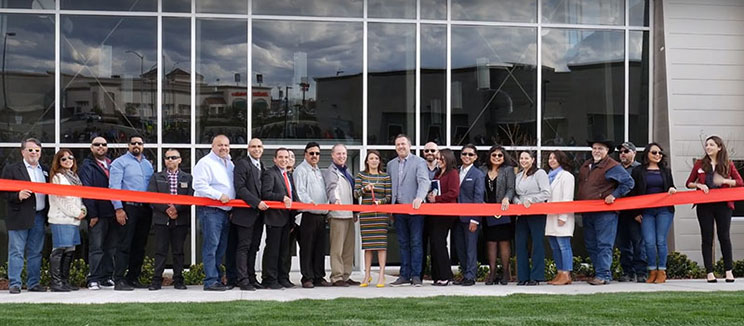
By Elizabeth Zach, RCAC staff writer
Española, N. M. – When Felicia Rodriguez found herself pregnant at age 16, she was very nervous, as are many expectant mothers. And that didn’t change when in later years she gave birth to two more children. Despite the anxiety surrounding childbirth, Rodriguez also remembers the profound joy at the thought of her newborn.
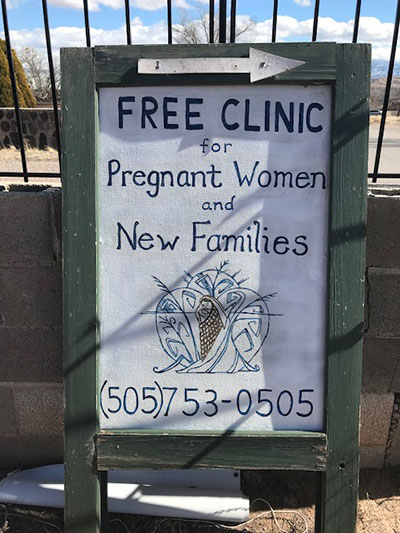 At each birth, Rodriguez was at a hospital, but as a Medicaid patient, she was still responsible for covering some of the costs. Moreover, there were logistics to consider: in the Española winter months, when ice covers the roads and a fierce wind sweeps across the mesas, a drive to the doctor’s office can be a perilous expedition.
At each birth, Rodriguez was at a hospital, but as a Medicaid patient, she was still responsible for covering some of the costs. Moreover, there were logistics to consider: in the Española winter months, when ice covers the roads and a fierce wind sweeps across the mesas, a drive to the doctor’s office can be a perilous expedition.
So when Rodriguez became pregnant again four years ago, she wondered if there was another option to give birth to her son Jacob.
“I had actually always wanted to have a natural childbirth,” she says. “But because I’m very low-income, I didn’t think I had access to that.”
Located a little more than 80 miles north of Albuquerque, and at one time, Española today is home to fewer than 11,000 people, many of whom work at the nearby Los Alamos National Laboratory. Northern New Mexico College has a campus here, too. But it is mainly a quiet, rural area, hemmed in by desert and mountains, terrain that requires hours of travel in or out.
Remote locations have led, in part, to the rise of doulas and midwives, which have a long history and tradition in the region. Although there is an established community of independent midwives in northern New Mexico, there were just two birthing centers in the state – one in Taos, the other in Los Ranchos, near Albuquerque.
“It’s been a medically underserved community for a while,” says licensed midwife Jessica Frechette-Gutfreund of Española. “Many women here have faced barriers to healthcare access, many have no insurance, and many don’t qualify for Medicaid. All of this affects the frequency of care for themselves and their babies.”
In 2010, Frechette-Gutfreund, several other midwives, and some 30 residents around Española started exploring how they might offer better healthcare services in the region. During the next two years, they drafted a strategic plan aimed at addressing disparities and challenges families, and in particular, pregnant women encounter, such as insurance issues and living far from medical services.
While there are four hospitals close by, the cost of giving birth at any of them is increasingly prohibitive for many women. In undertaking a feasibility study, Frechette-Gutfreund and her colleagues observed that while most births in the United States occur in hospitals, out-of-hospital births have become more appealing to women who desire a less stressful environment and a more homelike setting. As such, the industry has only expanded in the past decade and has at the same time, become more regulated.
Eventually, the group sought a way to establish a midwifery clinic in town and by 2012, had settled into a modest adobe structure with a courtyard on a slight hill overlooking the town. Christening their nascent clinic “Breath of My Heart,” or BMH, they drew from the regional and ancient Tewa language, “Navi pin haa un mu,” meaning “you are the breath of my heart.”
The medical landscape in Española is not unlike many other rural areas around the country. According to the Cecil G. Sheps Center for Health Services Research at the University of North Carolina at Chapel Hill, 102 rural health clinics have closed in the United States since 2010—that’s almost one per month. One obvious consequence is dangerously limited access to critical health care services. But rural hospitals are often also economic engines for their small communities, which, if a hospital closes shop, make it more difficult to attract businesses, and new residents.
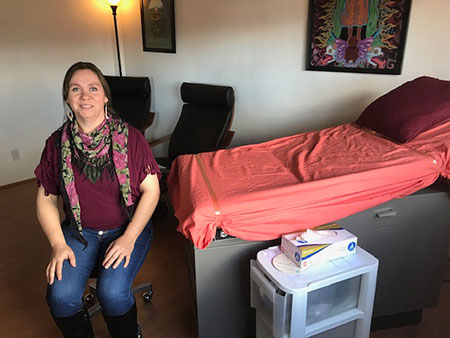
And yet some rural communities—like Española—have found a way to reverse this trend and rather than lose their local clinic, or exist without one, have in fact expanded their services. Their unusual success against economic headwinds may be a helpful lesson for other rural regions that find themselves in danger of either losing their hospital or having to cut services.
In 2018, Breath of My Heart applied for and received a $310,000 loan from Rural Community Assistance Corporation (RCAC) to buy and improve the building that would serve as a birthing clinic. (After the improvements have been completed, the construction loan will be converted to permanent financing to be repaid over 30 years.) In doing so, it joined two other California-based healthcare facilities, which have benefited from RCAC loans that proved critical to financing expansions or additions to facilities that serve rural populations.
“As far as we’re concerned, it really was a wonderful miracle to get this loan,” Frechette-Gutfreund says. Before applying for the loan, she had learned that an application to the U.S. Department of Agriculture’s Community Facilities Fund, if successful, would have meant a two-year wait for the funding.
“But we were already under contract to build ,” she says. “I then did a Google search and found RCAC. And I can say their loan officers were infinitely compassionate toward our situation.”
For 40 years RCAC has provided training, technical and financial resources and advocacy for rural communities. Since 1988, through its Loan Fund it has made loans to rural communities throughout the rural West. These loans support water and wastewater improvements, affordable housing, community facilities and small businesses, and by extension, help create or retain jobs.
Breath of My Heart serves the Upper Rio Grande Valley, which includes the city of Española, Abiquiu, Ojo Caliente and eight pueblos. The majority of the population identifies as Hispanic or American Indian.
The clinic left such an impression on Rodriguez that today she serves as a volunteer board member.
“I’ve seen and lived the experience of natural childbirth,” she says. “I see the good work we do here. We try to find access to funds and to raise funds—one of the things we’re planning to do is to hire a nutritionist—so that we can continue to help women have safe and healthy pregnancies and births.”
According to the 2016 American Community Survey, about a quarter of all Rio Arriba County’s residents live below the poverty level. With this come challenges which, in an urban setting with greater financial and staff resources, may be more easily addressed. Premature births here are higher than elsewhere in the state and nation; teen births are significantly higher here than compared with the rest of New Mexico, and double the national average. Medicaid enrollment here is also much higher compared with the state, and is expected to increase.
“The new facility will allow the owners to gain licensure through the New Mexico Department of Health which, in turn, gives the clinic the ability to bill Medicaid for a facility fee that will enhance their revenue stream,” notes Darryl English, the RCAC loan officer who worked with Breath of My Heart to secure its loan.
Livingston Community Health
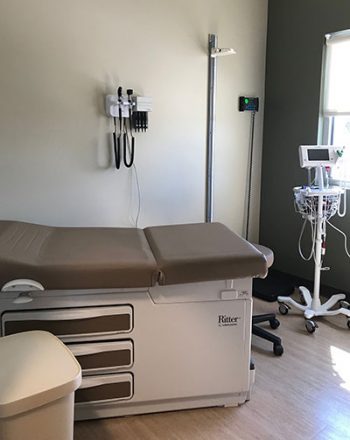
Meanwhile, a rural community clinic in California’s Central Valley faced similar growing pains to Birth of My Heart, albeit following five decades of successful operation and amid three regional hospital closures since 2010.
The nonprofit Livingston Community Health (LCH) had seen a marked increase in patients since the Affordable Care Act (ACA) passed, which allowed previously uninsured Americans to buy healthcare coverage. The number of Californians able to buy insurance has been on the rise, and if more people have health insurance, they are able to afford services and are more likely to receive care outside of emergencies. This, along with an aging population, translates into industry revenue, which experts predict will only increase, and also leads to higher employment and wages.
LCH serves a population which, on average, has substantially lower incomes compared to the rest of California. Merced County’s unemployment rate in February 2019 was 10.7 percent, in contrast to the state average of 4.2 percent that same month. The USDA has designated the City of Livingston a high poverty area.
LCH, which is a federally qualified health center, has clinics in Livingston, Patterson, Hilmar, Delhi and Waterford, all in the Central Valley. But services were becoming harder to provide because more patients were seeking care, in particular dental care, which only one of their facilities (in Delhi) offered.
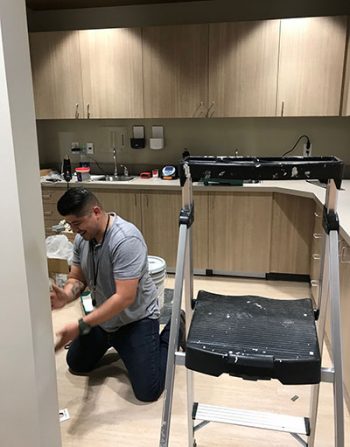
In 2017, LCH sought permanent financing to construct a 40,000-square-foot medical campus in Livingston to replace its 13,564-square-foot building, of which only about 7,000 feet were suitable for clinical space. The idea to expand had taken root about a decade prior, but with the national economic downturn, had to be put on hold.
The organization ultimately combined New Markets Tax Credit (NMTC) financing and investments from the Northern California Community Loan Fund, Alliant Capital and Chase Bank, as well as its own cash contributions. The NMTC financing came from the California Statewide Communities Development Corporation, which was created in 1988, to allow the state’s local governments to finance community-based public benefit projects, and it serves to attract investment capital to low-income neighborhoods that are often overlooked by traditional lenders.
LCH also applied for and received a $6.6 million construction loan from RCAC. That construction loan will be converted to a long-term $6.6 million loan using Relending funds RCAC obtained from USDA Rural Development once construction is complete.
“We really do have a commitment to primary and preventive care, for all individuals with or without the ability to pay,” Leslie Abasta-Cummings, Livingston’s chief executive officer, said. In applying for its RCAC loan, LCH expressed its intention to serve patients who meet criteria under its sliding fee policy at a nominal fee or at amounts less than its established rates.
She notes that the larger campus will have 10 more examination rooms and four new physicians, and two new dentists and a team of hygienists. This is a significant achievement in light of the fact that rural clinics across the country struggle to retain their medical staff and to attract them in the first place.
“It’s very hard in the Central Valley to bring doctors to these smaller towns to live and work,” Abasta-Cummings said. “But a state-of-the-art building and infrastructure help us recruit and attract medical professionals.”
Regardless, a visit to the new LCH campus is encouraging. Well-tended, drought-resistant foliage surrounds the complex. Inside, muted desert tones convey an appealing, subdued ambience, and details such as stylish mosaics around the drinking fountains and a well-equipped cafeteria work to make this a place worth coming to. Indeed, it is arguably the most attractive building for miles around.
“It was a labor of love,” Abasta-Cummings said, “with everything, the design, the flow, the fixtures.”
Eastern Plumas Health Care District
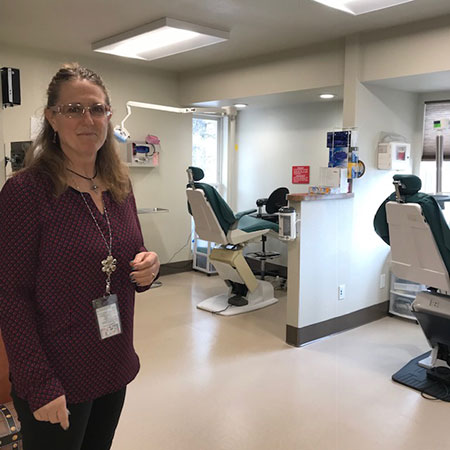
Health officials in Plumas County, about 130 miles to the north, are familiar with these challenges to their rural healthcare system and in particular with treating patients who struggle with addiction and mental illness.
The national opioid epidemic in the past decade has played out mostly in remote, rural areas like Plumas County, which presents a challenge for health care providers already hampered by rising health care costs. Geographical isolation and too few medical professionals and resources have exacerbated the crisis, and both law enforcement and small local hospitals are battling to keep up.
“In general, more rural areas have larger challenges than those that are more urban,” said Dr. Carmen Rita Nevarez, director of the Center for Health Leadership and Practice in Oakland. “There’s a lack of concentration of people, higher unemployment and scarcer resources—if you have a job, you’re less likely to engage in substance abuse.”
For years, Plumas County led the state in the number of opioid-related deaths. According to the California Department of Public Health, the county had more than 20 opioid-related deaths per 100,000 residents, compared to the state’s overall rate of 4.9, in 2014. In 2015, its opioid death rate was 31.3 per 100,000, compared to the state’s rate of 4.73.
Officials at Eastern Plumas Health Care District (EPHCD), which is one of the few health care providers that serve the eastern Plumas County towns of Portola, Loyalton and Graeagle, and parts of Sierra County, knew they had to act. Along with the addiction crisis, EPHCD has had difficulty coping with a high instances of dementia, depression and anxiety.
Through the California Department of Health Care Services, the district applied for and received PRIME (Public Hospital Redesign & Incentives in Medi-Cal) grant funds as an incentive to expand health care in its service area. Specifically, it planned a $2.7 million addition to its campus and a $600,000 remodel of its existing clinic.
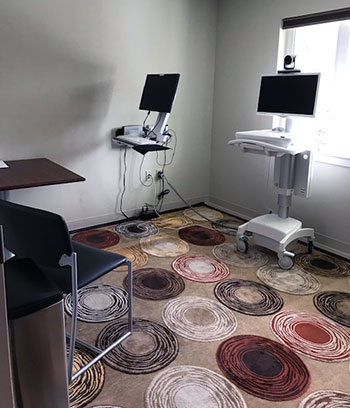
While obtaining the PRIME grant was not difficult, implementing a new behavioral health program and meeting all of the grant specifications— especially data collection and reporting—proved onerous, said Rhonda Grandi, director of clinics at Eastern Plumas Health Care. Hiring medical professionals was also an initial challenge.
“It was extremely difficult to recruit to our very rural area,” she says. “However, we finally have a great behavioral health team consisting of an RN case manager, licensed marriage and family therapist (LMFT) and a psychiatric mental health nurse practitioner. It is all becoming more seamless, ultimately making behavioral health services just another specialty offered at Eastern Plumas Health Care.”
In 2018 the district received a $2.8 million short-term loan from RCAC to help cover construction costs. That construction loan will be converted to a long-term $2.8 million loan using Relending funds RCAC obtained from USDA Rural Development once the facility is complete.
It helps that EPHCD was financially strong to begin with, according to an overview of its assets and financial history conducted during the loan application process. “Patient services are provided under contractual arrangements with Medicare and Medi-Cal programs, commercial insurance companies, health maintenance organizations (HMO) and preferred provider organizations (PP). All patients are accepted regardless of their ability to pay.”
“Even though we are limited in terms of our size, we have been able to stay solvent, and even add specialties and ancillary services,” says Grandi, referring to departments in cardiology, dermatology, pediatrics and obstetrics.
She describes one patient, a 66-year-old Navy veteran, who showed up at the clinic in November 2017 with suicidal thoughts. In meeting with the LMFT, he stated that he was uninterested in medication. But the therapist was able to gain the man’s trust and within six weeks, he agreed to give anti-depressants a try.
“Through collaboration (with the other clinic team members), a plan was created to add an anti-depressant and continue therapy,” Grandi recalls. “Today, he is talking, smiling and interacting more with staff members.”
She acknowledges, however, that some things remain out of reach.
“We’d love to have EPIC (a documentation and data management software program),” she says, “but that would cost around $20 million, and the most we could spend would be about $5 million.”
Regardless, EPHCD’s infrastructural endeavors are particularly important in treating addiction, Grandi said.
“We’ve mostly been helping (behavioral) patients via telemedicine,” she said one afternoon while showing a visitor the construction area. “This is less than ideal for treating these patients.”
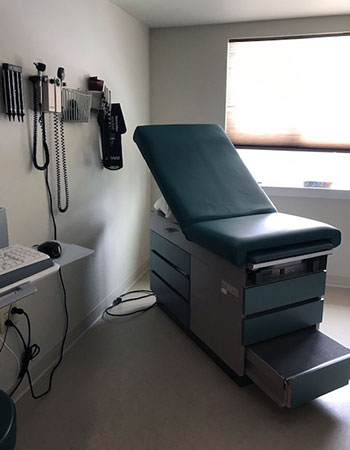
She noted in one report that when Eastern Plumas began transitioning patients from telemedicine psychology/psychiatry, the clinic carefully reviewed more than 350 patient charts and discovered that about a third of these patients “were identified as severely mentally ill versus the mild to moderate mental illness that the (telemedicine) program was designed to treat.”
Therefore, the expanded infrastructure was aimed at allowing more face-to-face interaction between medical staff and patients. The hospital’s addition includes four exam rooms, six offices, five restrooms, a new primary entrance, and a waiting and clinic registration area. The remodeling includes a new entrance, waiting and registration area for the existing dental suite; new accessible restroom; a new provider work area; and a renovated work area for the nurses.
EPHCD expects that with its expansion, revenues will increase, in part because of treating Medi-Cal patients for behavioral illnesses. But EPHCD has also planned ahead so that if those patients level off, the added exam rooms can be converted into medical exam rooms.
“EPHCD is the only health care provider in the area, and the district feels medical provider services would provide the net revenues for debt service in this event,” said John Weidemaier, former RCAC loan officer.
Meanwhile, broadened awareness among health officials and expanded medical services are undoubtedly helping patients in Plumas County who struggle with opioid addiction.
By 2016, there were no opioid-related deaths in Plumas. The following year, there was one opioid-related overdose death.
“As far as 2018 goes, I can’t be 100 percent certain,” said James Wilson, a health education coordinator in Plumas County who works with the regional Northern Sierra Opioid Safety Coalition, which serves Plumas, Lassen, Sierra and Modoc counties. “There was one opioid-related overdose death for certain (a mix of fentanyl, hydromorphine and cocaine). There are three deaths that took place late in 2018 that are still pending toxicology investigations, so we can’t rule those out 100 percent yet.”
Nor can these rural communities rule out the healthcare and insurance landscape changing dramatically in the coming years. In each review of their assets when they applied for their loans and grants, it is clear that their ability to remain solvent—or, indeed, to expand their services—hinges on the risk that the health care reform of the past few years could stall or be reversed.
“The possible repeal, or replacement, of the Affordable Care Act, could have unknown effects,” said Michael Carnes, RCAC loan officer, in reviewing Livingston’s expansion plans.
“But the demand for healthcare as a basic human essential need,” he noted, “will continue to increase and there will have to be continued feasible methods for providing healthcare services to all.
Feature photo: Ribbon cutting for a portion of the new 40,000-square-foot medical campus was held on March 8. The health center is scheduled to open in May and the dental office will quickly follow. Photos taken by Christia Langston from MARCOM Strategies.
All other photos taken by Elizabeth Zach.
